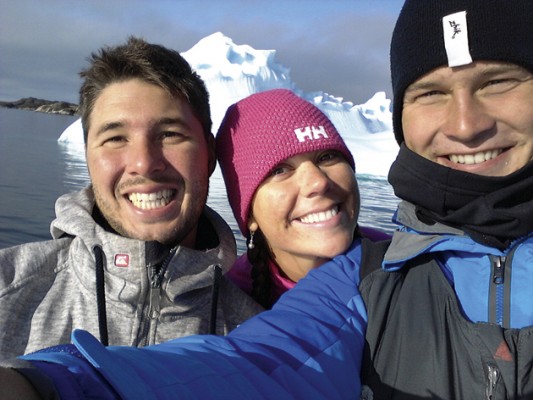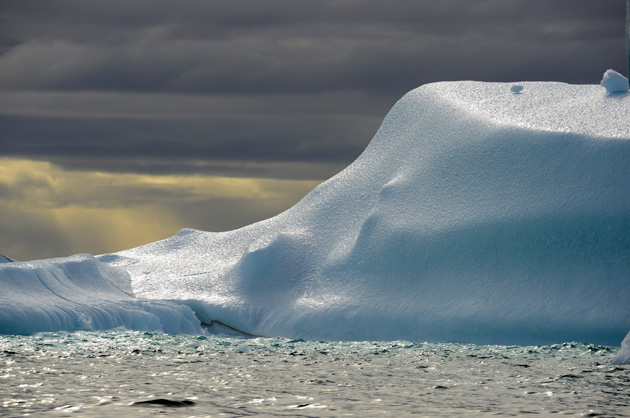When Henry Bomby was asked to deliver a Pogo 12.50 to France from north-west Greenland he jumped at the chance of adventure. But he soon discovered the darker side of Arctic sailing
There are very few facilities; you moor alongside a local fishing boat or on a harbour wall, careful to get the tightness of your lines right as the tide rises and falls. There are supermarkets, however, in the bigger towns, and you can normally top up with diesel and water if the town boasts any sort of fishing fleet. You may even find a bar, restaurant or a ‘hotel’ if you’re lucky. But the fact is that sailing in the Arctic is an out and out adventure, and it’s the coolest place (pardon the pun) I have ever sailed.
I was offered a job by some friends to skipper a boat back from north-west Greenland to Brittany in France along with two other crew, Loic and Sara. I was told to take lots of warm clothing, a good camera, and to prepare for one hell of an adventure. It all sounded fantastic. After a long season of training and racing on the Figaro Solo circuit, this was just what I needed to recharge the batteries.
I bagged a window seat for my connecting flight from Kangerlussuaq to Aasiaat and reaped the rewards as we flew over some of the most stunning landscapes I have ever seen. It was about then, as I stared down at the icy wilderness below, that I realised just what I was getting myself into.
The boat was a Pogo 12.50, which is basically a cruising Class 40 – ie there was a heater, fridge and proper chart table and the toilet was actually plumbed in and worked! She had a few modifications for her Arctic trip, including reinforced Kevlar rudders for moving through pack ice.
There were guns on board for polar bears, sleeping bags that were good in anything down to –18°C as well as hot water bottles, which proved an absolute life-saver. There was also a watermaker, although we never used it, and a hydro generator which was absolutely fantastic – we never charged by engine once.
Heading south
Rather than wait for the ideal weather window and head straight to France and into ‘Titanic territory’, as we called it, we decided we would get to know the boat a bit, and so set off south in short stops of around 200nm, stopping off at Maniitsoq and Paamiut along the way.
These short trips enabled us to learn some neat tricks that made life on board more comfortable, such as heating up hot water bottles and strategically placing them among our mid-layers. Because of the cold, staying hydrated was a real problem for us, and in the first few days we found ourselves getting headaches from the dehydration. So we made hot drinks on most watch rotations to keep up the fluids.
During the nights I would sleep next to my mid-layers, socks, hat, etc, so when it came to putting them back on they were body temperature and not icy cold. Slowly, but surely we were adapting to life in the Arctic.
We would motor close to icebergs in calm weather to take in their amazing beauty, and would excitedly call each other on deck in the middle of the night to share the wonder that is the Northern Lights. When the cold got too much we would put on the heater and climb into our sleeping bags to warm back up, hot water bottle in hand.
After two weeks we started to see signs that winter was coming. All the small boats were being lifted out of the water around us before the whole place iced up, which we took as a sign that it was time to head back to France. We were leaving at the end of the summer season in mid-September, which meant more ice and more low pressure systems rolling off the American coast pretty much every other day.
We had a good weather window for two days, which was as far as we could predict with the ever-changing conditions, and if the longer-term forecast could be trusted, the first week looked good. The boat was stocked with food, water and diesel and we were as ready as we were ever going to be.
Sailing in the icefields
After two days of sailing we were approaching the southern cape of Greenland, which meant we were entering into the main icefields. The east coast of Greenland is packed with ice and glaciers. Bits break off during the summer months and slowly make their way south, directly into our path.
We needed to keep a constant lookout, both visually on deck and also on the radar. At night we changed our watch system to one hour on deck, one hour on radar/standby watch and one hour resting, from our previously luxurious watch routine we had been using for the first two weeks of two hours on, four hours off.
For our first night in the icefields thick cloud meant it was absolutely pitch black out on deck, making visual sightings of any bergs almost impossible. Just after 0100 I went down below for my standby watch. I chucked the kettle on to recharge my hot water bottle and huddled around the flames for the chance to experience that unfamiliar feeling of warmth once more. About 30 minutes later Sara was shouting for me to come on deck. I guessed what was up by the fear in her voice, but I hoped it wasn’t true.
What met my eyes quite literally sent chills down my spine, and I was pretty cold already. Four enormous bergs the size of cathedrals were sitting directly to windward of us, the biggest one just over a mile away. The clouds had now cleared and the moon was out, lighting up the sea.
In the darkness we had sailed completely unknowingly into an icefield. In a way it was awe-inspiring. They were by far the biggest lumps of ice we had seen all trip and they were compelling to look at as they lay silently like sleeping giants, waiting patiently to unleash their danger on an unsuspecting victim. There were growlers and smaller icebergs that had broken off in the water around us.
We were already too far to leeward to sail above them, so we just headed the most direct route we could to get through as fast as possible. Mercifully, the break in the clouds meant we had good visibility to navigate our way through. Sara took the boat off autopilot and steered through her watch and I went back to monitor the radar.
It was a good five minutes before we picked up the closest large berg on radar and by then it was within less than a mile. It showed up about three times bigger than any ship we saw on radar during the trip, giving you some idea of its colossal scale.
Three hours later we were out through the other side, and an hour after that the clouds came over again. We couldn’t help but feel we’d been extremely lucky.
The thought of how many icefields we could potentially sail through without ever knowing had me worried over the next few days. We couldn’t wait to get out of there. From then on each white crest of a wave looked like a potential iceberg. The rest of that night felt endless, and as the sun rose the next morning, we all breathed a sigh of relief.









